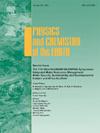Investigating the optimal replacement percentage of various types of coal waste with chemical additives in concrete construction for sustainable energy applications
IF 3
3区 地球科学
Q2 GEOSCIENCES, MULTIDISCIPLINARY
引用次数: 0
Abstract
The large coal production and consumption has caused environmental problems worldwide as a source of energy production with irreparable effects on soil, water, and the ecosystem. In addition, producing coal waste in coal washing plants and burying it intensifies the issue in nature. Due to the rising generation of coal waste from various sources, this study utilized several forms of coal waste obtained from a coal-washing plant in the production of both structural concrete (with a water-cement ratio of 0.54) and non-structural concrete (with a water-cement ratio of 0.7). The impact of coal waste on compressive strength (CS) was examined at curing ages of 7, 28, and 56 days. Various percentages of coal waste were substituted for both cement and sand. A superplasticizer was incorporated into the concrete mixtures to enhance the workability and achieve the desired slump and strength levels. According to the compressive strength findings, the ideal replacement level of sand with jig coal waste was 30 %. For 56-day-old specimens, the optimal substitution rates for cement with jig coal waste powder, flotation coal waste, and coal waste ash were found to be 10 %, 10 %, and 20 %, respectively. Notably, adding 10 % coal waste powder and coal waste ash increased compressive strength by 22 %, 23 %, and 44 % at 56 days.
研究在混凝土建筑中使用化学添加剂替代各类煤炭废弃物以实现可持续能源应用的最佳比例
作为一种能源,煤炭的大量生产和消费在全球范围内造成了环境问题,对土壤、水和生态系统造成了不可弥补的影响。此外,在洗煤厂生产煤矸石并将其掩埋,加剧了自然界的问题。由于来自各种来源的煤矸石的产生不断增加,本研究利用了从洗煤厂获得的几种形式的煤矸石来生产结构混凝土(水灰比为0.54)和非结构混凝土(水灰比为0.7)。在养护7天、28天和56天时,研究了煤矸石对抗压强度(CS)的影响。用不同比例的煤矸石代替水泥和砂石。在混凝土混合物中加入了一种高效减水剂,以提高和易性并达到所需的坍落度和强度水平。根据抗压强度结果,跳汰煤矸石的理想替代水平为30%。对于56日龄的试样,跳汰煤矸石粉、浮选煤矸石和煤矸石灰的最佳替代率分别为10%、10%和20%。值得注意的是,添加10%的煤矸石粉和煤矸石灰,在56天的抗压强度分别提高了22%、23%和44%。
本文章由计算机程序翻译,如有差异,请以英文原文为准。
求助全文
约1分钟内获得全文
求助全文
来源期刊

Physics and Chemistry of the Earth
地学-地球科学综合
CiteScore
5.40
自引率
2.70%
发文量
176
审稿时长
31.6 weeks
期刊介绍:
Physics and Chemistry of the Earth is an international interdisciplinary journal for the rapid publication of collections of refereed communications in separate thematic issues, either stemming from scientific meetings, or, especially compiled for the occasion. There is no restriction on the length of articles published in the journal. Physics and Chemistry of the Earth incorporates the separate Parts A, B and C which existed until the end of 2001.
Please note: the Editors are unable to consider submissions that are not invited or linked to a thematic issue. Please do not submit unsolicited papers.
The journal covers the following subject areas:
-Solid Earth and Geodesy:
(geology, geochemistry, tectonophysics, seismology, volcanology, palaeomagnetism and rock magnetism, electromagnetism and potential fields, marine and environmental geosciences as well as geodesy).
-Hydrology, Oceans and Atmosphere:
(hydrology and water resources research, engineering and management, oceanography and oceanic chemistry, shelf, sea, lake and river sciences, meteorology and atmospheric sciences incl. chemistry as well as climatology and glaciology).
-Solar-Terrestrial and Planetary Science:
(solar, heliospheric and solar-planetary sciences, geology, geophysics and atmospheric sciences of planets, satellites and small bodies as well as cosmochemistry and exobiology).
 求助内容:
求助内容: 应助结果提醒方式:
应助结果提醒方式:


